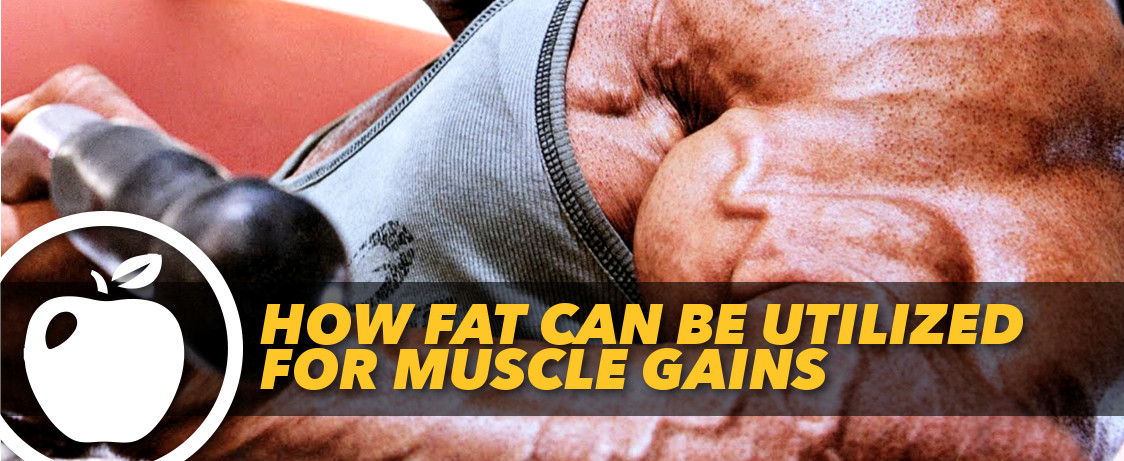Why fat shouldn’t be overlooked in a bodybuilder’s diet.
Fat seems like a scary word. It’s often associated with a variety of nutritional fears and worries. No one wants to be fat – and this often leads to the misunderstanding that dietary fat should be avoided in a person’s diet. While less common now, for years people would turn to the back label of food products and look for that magic “zero percent fat” statistic.
But the truth is that dietary fat is not the enemy. So to help put everything in one place for you, we decided to break down how dietary fat fits into a bodybuilder’s diet. What kind of fat is good fat? How much should you consume? These are the questions we are here to answer for you.
.
Fat Helps With Muscle Gains… and a Whole Lot of Other Things.
Much like carbohydrates, fat serves as an energy source for the body. Fat is calorically dense – It usually packs nine calories per gram, giving you the most bang for your buck in terms of meeting that daily high calorie number. Does this mean you should scarf down food that is filled with dietary fat? Of course not. But it can be used strategically to make sure you keep up with your intake of calories to ensure muscle growth. This can’t be stressed enough. With the high calorie intake that a bodybuilder requires, dietary fat is a valuable tool for maximizing your calorie intake, thus maximizing your total muscle gain.
Fat is also responsible for the construction of every cell in our body. Therefore, the health of our cells and its bodily processes is dependent on us consuming a healthy amount of fat. Fatty acids even help form the surface of your brain – so fat’s really not bad for you at all. Quite the contrary, it’s very good for you! But like anything you consume in today’s culture, too much of anything can be unhealthy and eating the wrong kinds of fat can lead to problems. Let’s look deeper.
.
What is “Good” Fat?
Dietary fat can basically be cut down into two major types. “Good” fat and “bad” fat (We know, it’s very scientific). So how do you know what the “good” fat is? We’re here to help. Healthy fat can be found in Omega-3 and unsaturated fats. Let’s break it down.
.
Omega-3
Omega-3 is one of the newer fatty acids that everyone is talking about. Omega-3 is often found in food like salmon, canola, walnuts, and fish oil supplements – to name a few. The main reason why everyone goes ga-ga over Omega-3 is because it contains nutrients that lower bad cholesterol and lower blood pressure. So it’s really a no-brainer.
Monounsaturated Fat
One kind of unsaturated fat is of the monounsaturated variety. This can generally be found in olive oil, almonds, and avocados. The best part of monounsaturated fats are that they carry healthy attributes without majority of the negative effects. Some studies even say that they are linked to lowering cholesterol and healthy skin.
Polyunsaturated Fat
Another kind of unsaturated fat is polyunsaturated. This contains essential fatty acids which the body cannot produce by itself. You can find this in salmon (and other fish), nuts, and peanut butter. The health benefits of polyunsaturated fat are, once again, lowering cholesterol and lowering the risk of cardiovascular disease.
.
So What is “Bad” Fat?
With all this talk about how healthy fat can be – you’re probably getting very optimistic about this whole thing. You might be thinking, “There’s nothing bad about fat at all!” Well slow down there – there can be plenty bad if you eat the wrong kinds. “Bad” fat can be broken down into trans fats and saturated fats. Let’s take a look.
.
Trans Fats
This is the worst of all the fats. Why? Because it is man-made and processed. These often carry the opposite effects of what all those “good” fats can do for you. Things like raising cholesterol; increase heart disease; and risk of diabetes.
This is the kind of stuff you imagine when you hear the word fat. It can be found in butter, margarine, fast food, cookies, and other desserts. Basically, this is the stuff you should always avoid.
The Pros and Cons of Saturated Fats
Saturated fat can be good for you – if it’s taken in moderation. The good side is that it provides aid in strengthening your bones – which could be extra helpful for bodybuilders constantly pushing themselves to the limit.
But too much saturated fat can be bad for you and often contains the negative effects similar to trans fats. Things like high cholesterol; increase risk of heart disease; and cancer.
For the most part, your body naturally produces saturated fat. This is why it’s not necessary to eat a whole ton of it. Unfortunately most foods contain some level of this stuff – so it’s important for you to keep track of how much is found in the food you eat and keep your levels in check.
.
So How Much Should You Consume?
Now that you know what is the “good” and what is the “bad” fat. The last important thing to note is how much you should be putting into your diet. The rule of thumb is about one third of your diet can consist of dietary fat. The majority of this percentage should go towards monounsaturated (about 15%) with the rest split up among polyunsaturated and saturated fats. And of course, ideally 0% would go towards trans fat.
So there you have it. A comprehensive break down on all things fat. As you can see, all fat is not created equal. Sometimes the word “good” and “fat” can actually go together. Was this article helpful? Let us know in the comments section below and make sure to hit us up on our official Facebook and Twitter pages.
Photo courtesy of Wallpaper Series.









